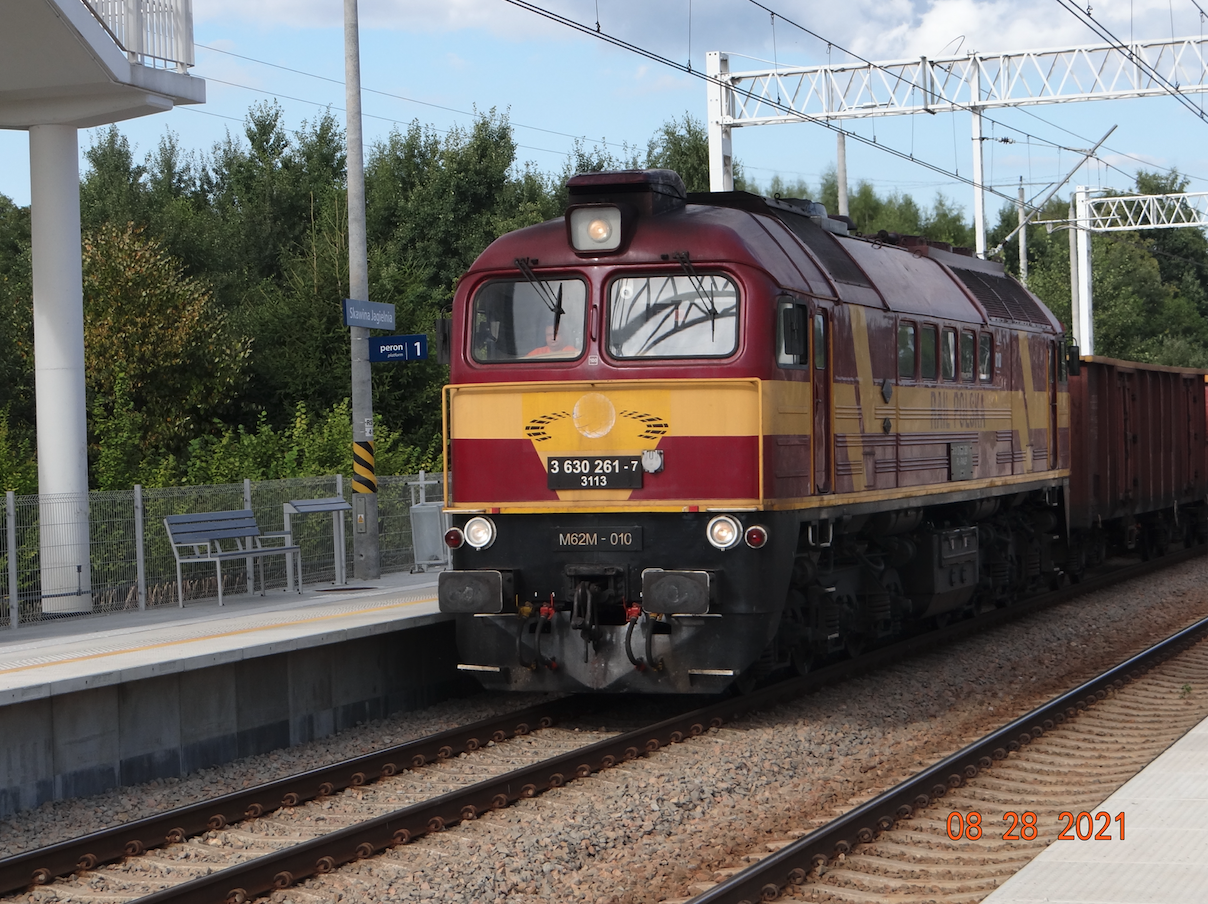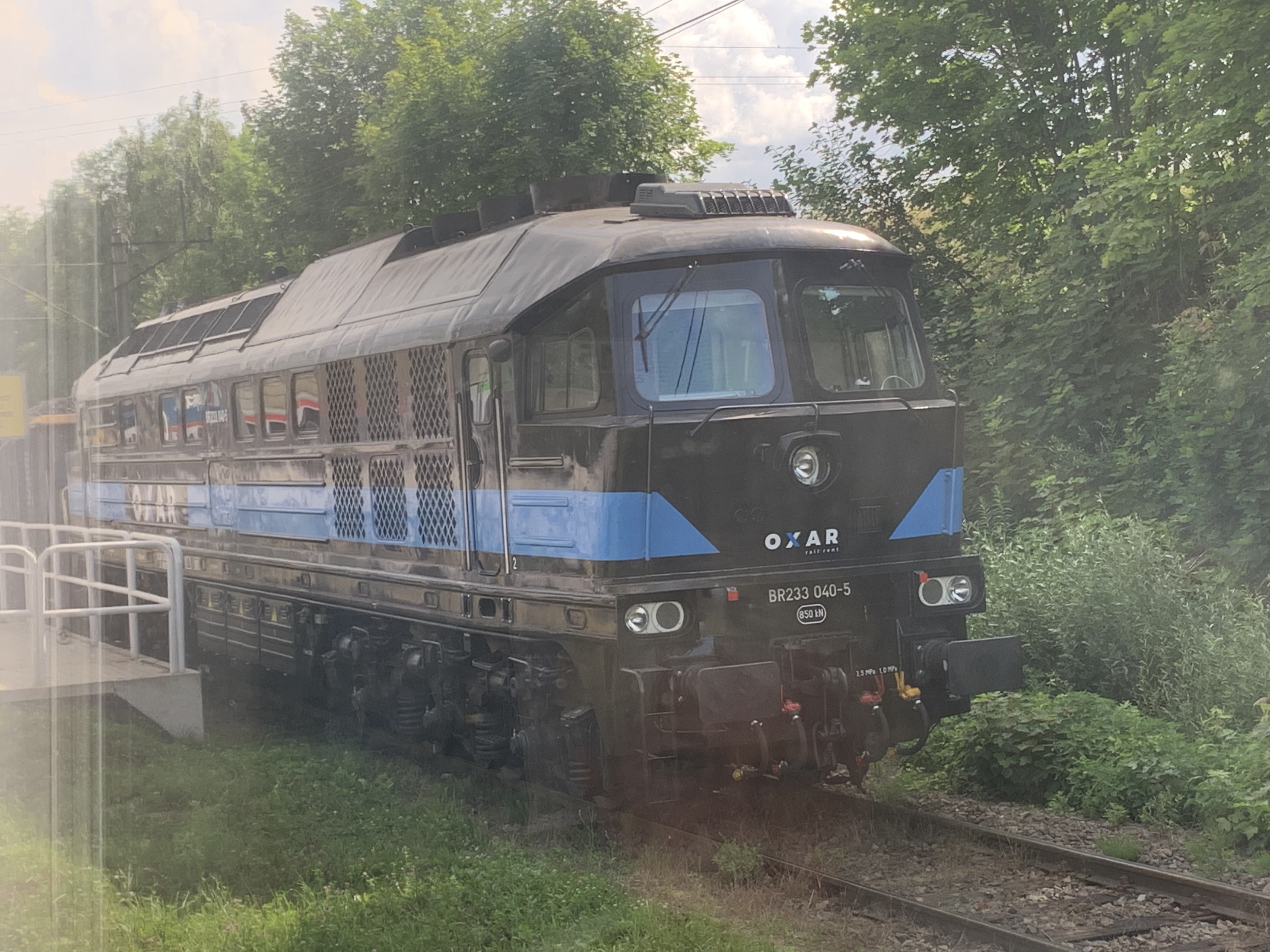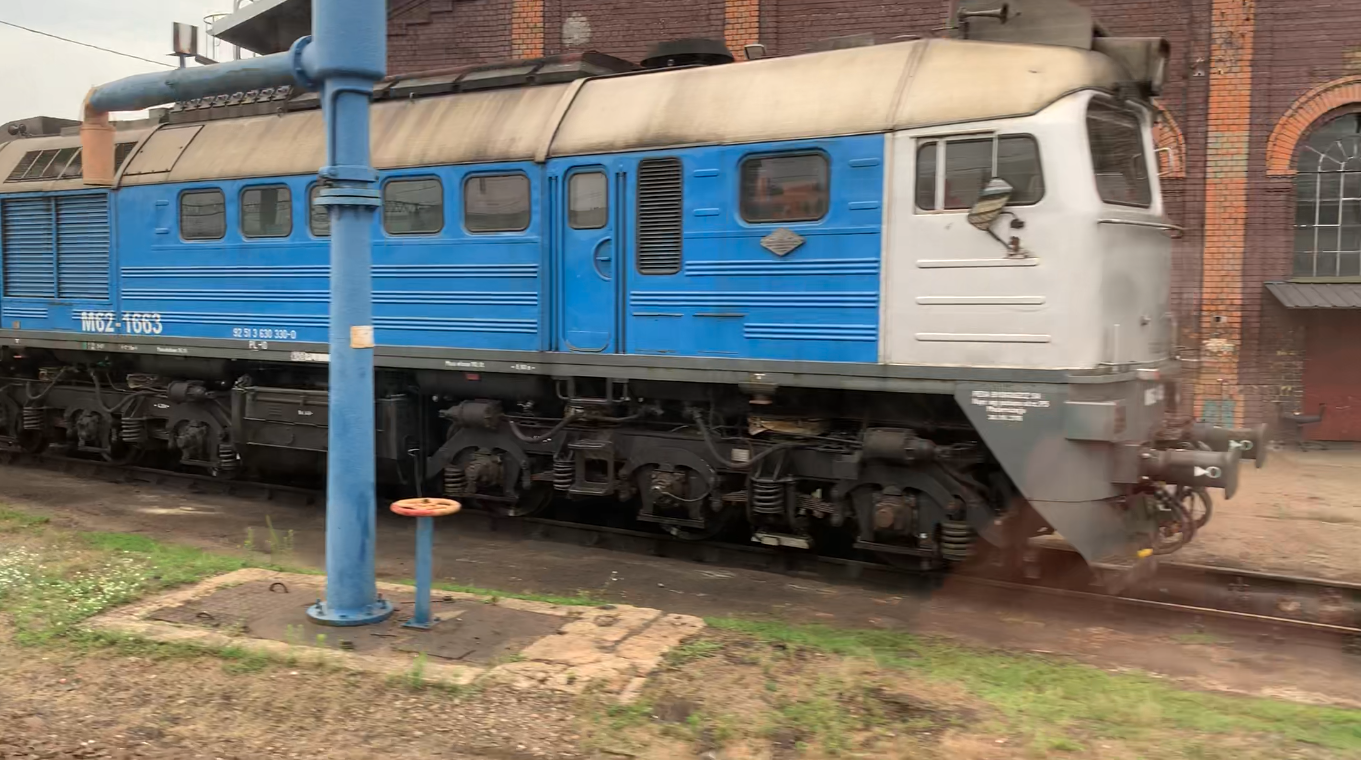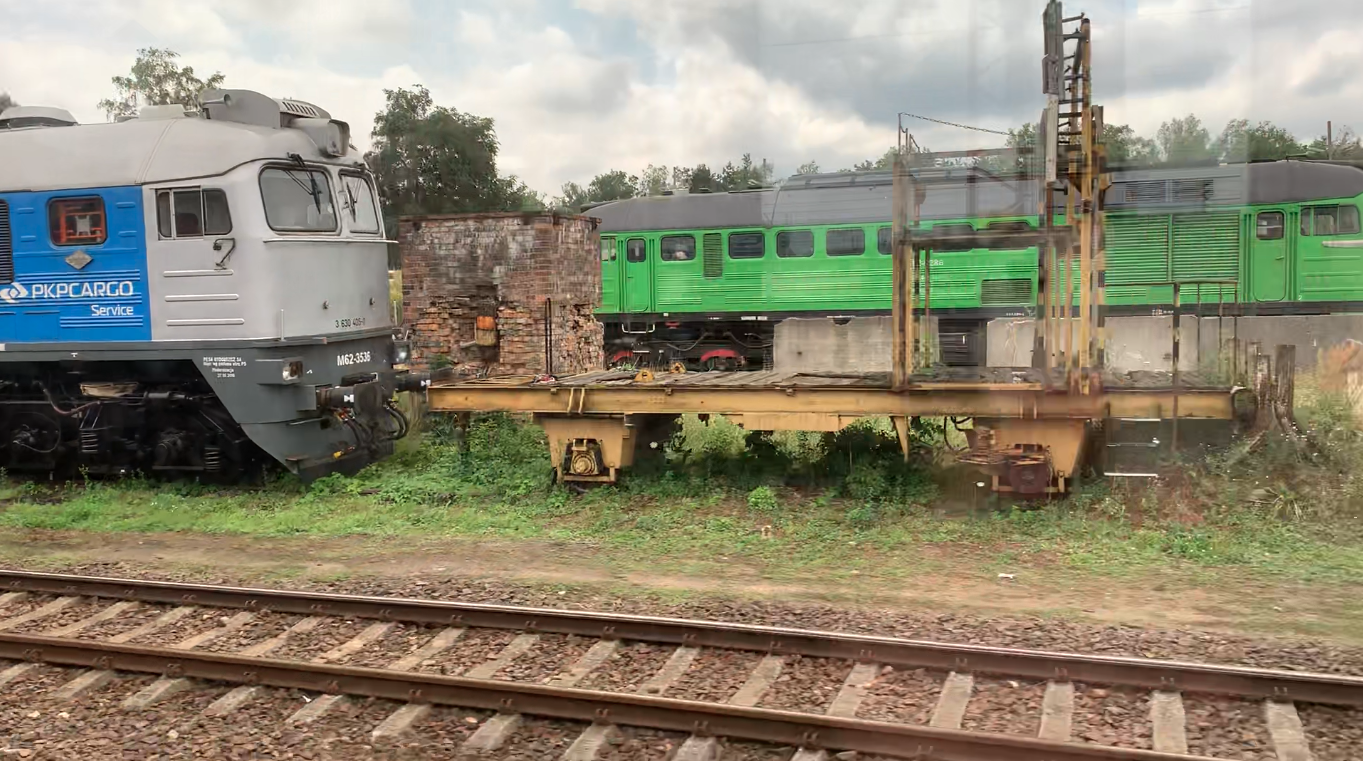Kraków 2021-10-25
ST44, M62 diesel locomotives. 2021.
ŁTZ M62 (ST44) is a Russian diesel locomotive, which was produced by Luganskij Tiepłowozostroitielnyj Zawod in Lugansk for the CCCP and other socialist countries of the Council for Mutual Economic Assistance and North Korea. The locomotive is popularly called "Gagarin" or "Ivan". The M62 (ST44) locomotives were produced in the period 1965 - 1988.
The locomotive combined all the typical features of machines from Russia: high power, high weight, low quality of the components used, low quality of workmanship, high failure rate, Spartan mechanic working conditions and low operating economy. The mechanic's cabin was neither heated nor air-conditioned.

Description of the photo: A modernized M62 locomotive with a Caterpillar engine and air conditioning in the mechanic's cabins. The locomotive was built in 1972. The modernization was carried out in 2007-2013. A 16-cylinder, internal combustion EMD 645E3 engine with 2,238 kW (3,000 hp) was installed. An AR10 Alternating Current Generator was used, along with a three-phase associated generator and a rectifier module. An electronic control system and a modern mechanic's cabin were installed.

The M62 (ST44) locomotive is a diesel locomotive with an electric transmission, i.e. the so-called three-machine. The 14D40 internal combustion engine was used: diesel engine, two-stroke, 12-cylinder, V-shaped, powered by a sectional pump, supercharged by a compressor and a turbocharger, without intercooler, displacement 151,000 cm3, compression ratio 14.5, maximum power 2,000 HP, rotational speed up to 750 rpm, engine weight 12,500 kg. Each cylinder has 4 exhaust valves. There are no inlet valves. The engine is characterized by high consumption of lubricating oil (two-stroke engine), minimum 5 liters per hour of operation. For this reason, the engine smokes a lot and pollutes the environment. The engine has no installation for heating it to facilitate starting in freezing temperatures. As a result, the engine loses compression in a few months and becomes fuel-consuming and oil-consuming. A generator is permanently connected to the internal combustion engine, which generates electricity supplying 6 electric motors of the ED-118AU2N type. The internal combustion engine was produced in the Kolomno plant.
ST44, M62 data:
Co'Co 'axis system. Wheel diameter 1.05 m. Length 17.55 m. Height 4.62 m. Width 2.95 m. Weight 116,000 kg. Fuel tanks with a total capacity of 3,900 liters. Top speed 100 km / h.
The first country that was forced to buy M62 locomotives was Hungary. Additionally, Hungary had to adopt the Russian designation M62, not its own. The only things that the Russian producer took into account were: the installation of headcarriages with bumpers and a screw coupling, instead of "Brezhnev's Fists", and taking into account the Hungarian railroad gauge.
Poland was forced by the CCCP to buy M62 locomotives, and thus to suspend the production and development of Polish diesel locomotives: HCP SU45, SU46, SP47.
From 1965, the M62 locomotives were delivered to Poland for PKP, as ST44 and for Przedsiębiorstwo Materiałów Podsadzkowych Przemysłu Węglowego. The Russians took into account Polish demands resulting from Polish regulations, including appropriate headlights. The locomotives were painted green, and each locomotive had a different shade of green, because the paints were mixed "by eye".
Poland was one of the countries that had to buy M62 locomotives until 1988. In total, PKP used 1,114 ST44 locomotives. Since 1990, many ST44 locomotives have been handed over to private rail operators. In addition, Poland was forced to buy M62 locomotives for a track with a width of 1,520 mm, for handling transhipment terminals on the eastern border of Poland and for servicing LHS. 68 M62 locomotives were purchased. Currently, LHS has 32 modernized M62 locomotives. The modernization was carried out at the same level as the M62 locomotives for PKP. In addition, private carriers bought abroad, second-hand, about 8 more locomotives.
Two and three-section versions were also built for the Russian railways. Officially, there was talk of super heavy trains. In fact, the idea was for the locomotive to reach its destination after the failure of one internal combustion engine, on the paths leading through the wasteland.
In Poland, the ST44 locomotives are subject to extensive modifications. The basic modification is the replacement of the internal combustion engine with an engine from the Caterpillar family, Dezel, four-stroke. By 2020, approximately 86 locomotives had been modernized. The Newag plant in Nowy Sącz is carrying out the most advanced modernization. The Newag 311D locomotive is being built there, where only the mainstay and bogies are left of the M62 (ST44) locomotive.

Description of the photo: OXAR Rail Rent - Bartex is a company operating in the financial market and in several other areas of the economy. In 2020, the company had 4 modernized M62M locomotives.

Photo description: The M62-1663 locomotive was built in 1972. In 2016, modernized by the Pesa Bydgoszcz plant.

Description of the photo: On the left side, the locomotive M62-3536 ex ST44-R010. The locomotive was built in 1979. In 2016, it was modernized by the Pesa Bydgoszcz plant. On the right, the M62 in the original Polish Railways painting.
Written by Karol Placha Hetman
